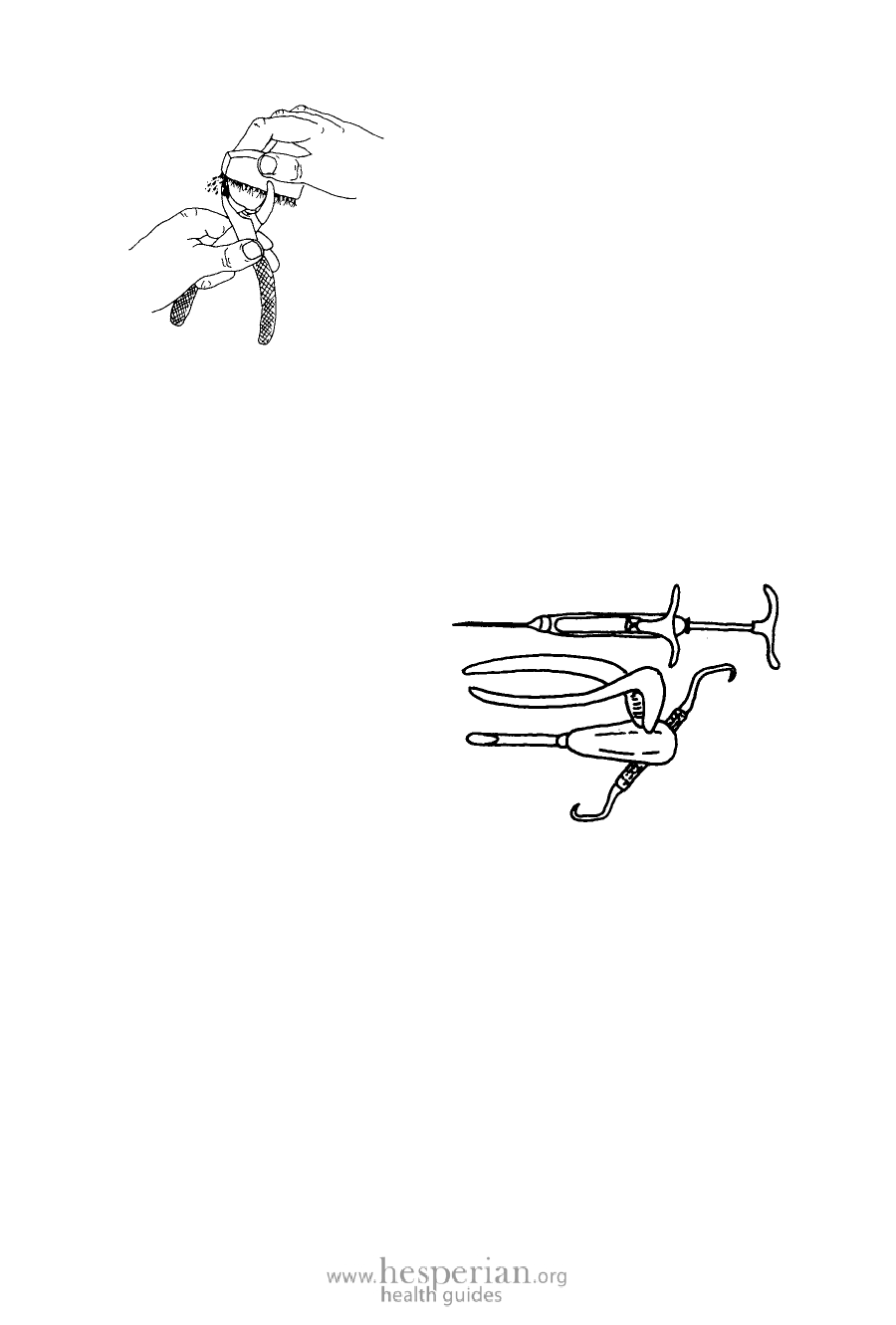
Where There Is No Dentist 2012 87
Germs hide inside bits of old food, cement, or
blood on an instrument. There they can continue to
live, even in boiling water.
This is why you must be sure to scrub the working
end of each instrument carefully with soap and
water. Rinse, and then look carefully to see that it is
clean and shiny.
Remember that ‘clean looking’ is not necessarily ‘clean’. Truly ‘clean’ means
free of germs. Unless you sterilize, that instrument may still have germs,
the kind that cause infection in the next person that it touches.
Sterilizing means killing germs. The best way to sterilize is with heat. High
heat kills almost all harmful germs—especially those that cause hepatitis,
tetanus, and mouth infections. Wet heat (steam) is always more effective
than dry heat from an oven.
Here is a simple rule to use in
deciding when to sterilize:
Boil or sterilize with steam
any instrument that has
touched blood.
That means always sterilize
all syringes, needles, and
instruments you use when
scaling teeth (Chapter 8)
or when taking out a tooth
(Chapter 11).
Be safe: When in doubt, sterilize.
Instruments need to boil in water for 30 minutes to become sterile. A pot
with a cover to trap the steam can act faster. The inside becomes hotter.
But remember that water can rust metal instruments. To prevent rust:
• Add 5 spoonfuls (20 ml) of oil to every liter of water you boil.
• Then lay the hot instruments on a dry, clean (sterile, if possible) cloth,
so the water can evaporate.
Never put an instrument away while it is wet.